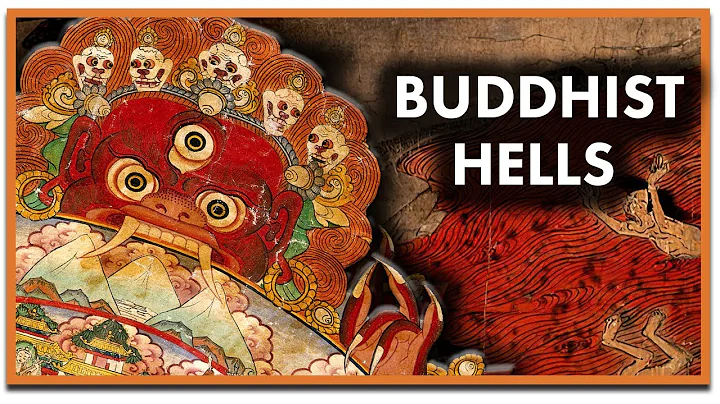In Buddhist temples, the Main Hall is the main hall, also known as the main hall. The Main Hall is the core building of the entire temple and is also a place where monks concentrate on practicing day and night.
Master Hall
One True Dharma Realm or mysterious or wonderful is not enough to find it in words
Great Light Hidden Hidden Canon be explained in words

In the Great Hall, Sakyamuni is generally worshipped, and Sakyamuni's virtue is called "Nobita", so it is called the Great Hall. "Nobita" is the Buddha's virtue name, why is the virtue name called Nobita? It is because the Buddha has great power and can subdue the four demons.
Therefore, in all the main halls in the temple, the lord worshipped must be a Buddha statue, not a Bodhisattva or a Dharma protector.
The Great Hall worships three Buddha statues, usually the Buddha of the Three Ages or the Three Ages.
1. The Buddha of the Three Ages

The Buddha of the Three Ages (also known as the Buddha of the Three Ages) is from a time point of view: refers to the Buddha of the past, the Buddha of the lamp, the Buddha of the present, and the Buddha of the future Maitreya Buddha .
1. Past Buddha: Lanlan Buddha

Lanlan Buddha is one of the thousands of Buddhas born in the past solemn calamity. Because all the light around you when you were born is like a lamp, it is called the Buddha of Lan Deng.
Ranning lamp Ancient Buddha gave a prophecy to Sakyamuni Buddha in the past, predicting that he would become a Buddha in the future. The " Diamond Sutra " says: "Good man, in the next life, you should become a Buddha, and be called Sakyamuni."
2. Now Buddha . Sakyamuni . Mani

. The main features of the Buddha statue of Sakyamuni are: sitting cross-legged, with the left hand placed horizontally on both knees, the right hand placed on the right knee, the palm facing inward, and the finger pointing to the ground, indicating that the earth is proof, and sacrifices all words and deeds to save sentient beings.
3. Future Buddha: Maitreya Buddha

Maitreya Buddha is translated as Ci. In Maitreya Buddhist scriptures, it is often called Ayidu Bodhisattva Mahasattva, and is the successor of the Buddha Shakyamuni Buddha. In the future, he will be born and practiced in the Saha world and become the next Buddha (also called the Future Buddha) in the Saha world, that is, the fifth Buddha among the thousand Buddhas of the Virtue Kalpa, and is often called "The Maitreya Buddha is born next time."
2. The Buddha of the Three Worlds

The Buddha of the Three Worlds (also known as the Three Worlds) is spatially speaking: refers to the central Sakyamuni Buddha, the Eastern Medicine Buddha, and the Western Amitabha Buddha.
1, Oriental Medicine Buddha

Oriental Medicine Buddha sect leader. It is known as Medicine Master Glazed Light Tathagata , also known as Medicine Master Glazed Light King Buddha , Great Doctor King Buddha, etc. According to the " Sutra of the Original Vow of Medicine Buddha, Lvli Light Tathagata, ", he is the Buddha in the Eastern Pure Glazed World. He made twelve great vows during the causal realm, so that all sentient beings can fulfill their wishes, especially wishing that all sentient beings will be fully equipped, diseases will be eliminated, and difficulties will be freed from disasters, so he is known as the Medicine Buddha who eliminates disasters and prolongs life. Praying to the Medicine Buddha's method of curing diseases, prolonging life and eliminating disasters is the universal belief of Mahayana Buddhist believers.
The characteristics of the Buddha statue of the Medicine Buddha are that sits in the lotus position on the lotus seat, wears a cassock, holds the medicine instrument in the left hand, and sets the meditation seal in the right hand; or holds the medicine bowl in the left hand and holds the medicine instrument in the right hand.
2. Western Amitabha Buddha

Amitabha Buddha, also known as Infinite Buddha, Infinite Light Buddha, Infinite Life Buddha, etc. According to the Mahayana sutra, Amitabha Buddha made great vows in the past long-standing kalpas to establish the Western Pure Land, save boundless sentient beings, achieve infinite solemn merits, and be widely respected and promoted by Mahayana Buddhism. Mahayana Buddhist scriptures mainly include " Amitabha Sutra ", "Amitabha Sutra", and "Amitabha Sutra", which describes Amitabha Buddha and his Western Pure Land in detail.
The Pure Land Sect of Chinese Buddhism completely uses the Western Pure Land of Amitabha Buddha as a special method of practice.
The characteristics of Amitabha Buddha statue are mainly in handheld objects and postures. According to relevant Buddhist scriptures, Amitabha Buddha statue is a small lotus platform in handheld, and some standing statues are hand-guided to show that Amitabha Buddha is guiding sentient beings.In the Great Hall of Chinese Buddhist temples, the statue of Amitabha Buddha was placed on the right side of Sakyamuni Buddha, sitting cross-legged on the lotus platform, with both hands tilted down on the feet, and a lotus platform was placed in the palm, indicating that the meaning of guiding sentient beings to the West and the transformation of lotus flowers.







![[English] Who Am I - Lecture 1 - Ven. Guan Cheng - DayDayNews](https://i.ytimg.com/vi/KU0fUs2It5o/hq720.jpg?sqp=-oaymwEcCNAFEJQDSFXyq4qpAw4IARUAAIhCGAFwAcABBg==&rs=AOn4CLDFpQUN_QwRfC7bmP4sUadq-RcYdg)
![A Moving Masterpiece 清明上河图 [English narration] - DayDayNews](https://i.ytimg.com/vi/kxff-4GktOI/hqdefault.jpg?sqp=-oaymwEcCOADEI4CSFXyq4qpAw4IARUAAIhCGAFwAcABBg==&rs=AOn4CLBtHGLeUpJNCYDJYnZTuISQ1N5Vag)


